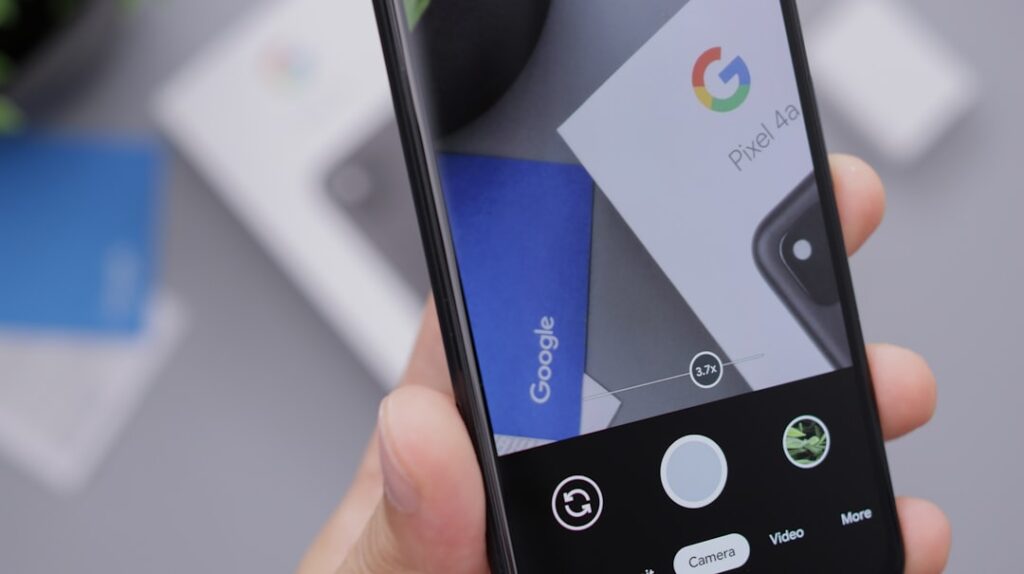Autodial apps have become a game-changing tool for both individuals and businesses in a time when communication is crucial. These apps greatly cut down on the time and effort needed to get in touch with clients, customers, or contacts by automating the process of dialing phone numbers. Autodial apps simplify communication by doing away with the need for manual dialing, freeing users to concentrate on talks rather than the technicalities of placing calls. For sales teams, customer support agents, & telemarketers who frequently make a lot of calls, this technology is especially helpful.
Key Takeaways
- Autodial apps are designed to automate the process of making phone calls, saving time and effort for users.
- Effortless calling is a key feature of autodial apps, allowing users to make multiple calls with just a few clicks.
- Using an autodial app is simple and intuitive, with features like contact list integration and call scheduling.
- Customizing autodial settings allows for personalized communication, such as setting call priorities and adding custom messages.
- Security and privacy measures in autodial apps ensure that user data and communication are protected.
In a variety of communication situations, the efficiency that autodialing provides can result in higher output & better results. Also, the growth of autodial apps is directly related to developments in cloud computing and mobile technology. These apps are now more widely available than ever thanks to smartphones. Users can easily incorporate autodial apps into their daily routines after downloading them from app stores.
Whether a person is following up with current clients or contacting potential clients, having an autodialer at their fingertips allows them to manage their calls more efficiently. Autodial apps are a major advancement in communication strategy optimization as companies look for ways to improve operational efficiency. Effective Contact Management. The ability to efficiently create and manage contact lists is one of the most noteworthy features of autodial apps.
Contacts can be imported from a variety of sources, including CRM systems and spreadsheets, giving users rapid access to a sizable database. enhanced calling features. Numerous autodial applications provide sophisticated calling features, such as the ability to schedule calls, which lets users designate particular times for calls to be placed. This feature is especially helpful for companies that have to follow certain calling hours or operate across time zones.
| Metrics | Value |
|---|---|
| Total Downloads | 10,000 |
| User Ratings | 4.5/5 |
| Active Users | 5,000 |
| Retention Rate | 80% |
Also, certain applications come with integrated analytics tools that monitor call results, giving users useful information about performance indicators & assisting them in honing their tactics. Better Communication Results. Using autodial apps has advantages beyond convenience; they also help to improve communication results.
By automating the dialing process, users can significantly increase their call volume without sacrificing quality. This is particularly beneficial for sales teams whose main outreach strategy is cold calling. Increasing conversion rates and eventually driving revenue growth can result from being able to connect with more prospects in less time.
Even people who are not tech-savvy can use autodial apps because they are usually simple to use. Usually, the first step is to download the app from a reliable source, like the Google Play Store or Apple App Store. Users are asked to register for an account or sign in if they already have one after installation. Once their profile has been created, users can start adding contacts to the app.
Either manually entering numbers or syncing with their devices’ pre-existing contact lists will typically accomplish this. Users can also group contacts into groups using many apps, which is especially helpful when planning outreach campaigns according to various parameters like lead status or location. Users only need to tap their screens a few times to begin making calls after the contacts have been imported and arranged. The majority of autodial applications have an easy-to-use interface that lets users choose a contact & make a call right away. A “one-touch” dialing feature that allows users to connect with contacts without switching between screens is even available in some applications.
Users can benefit from extra features like call recording & note-taking capabilities during calls, which improve the experience overall & guarantee that crucial information is recorded. Users can examine the app’s analytics after making calls to evaluate their performance and modify their calling tactics as needed. Autodial apps’ versatility in accommodating different user preferences and communication styles is one of their best features. Call scripts, which act as guidelines during conversations, are one example of a setting that users can customize. Salespeople who need to keep their messaging consistent while allowing for personal touches depending on the conversation’s flow will find this feature especially helpful.
Also, a lot of autodial apps let users record customized voicemails that can be played in the event that a call is not answered. This guarantees that even in the event that a connection is not established, the recipient will receive a polished, customized message that accurately conveys the caller’s intentions. Also, autodial apps frequently let users change calling parameters like the frequency of calls & the time between calls. An excessive number of calls in a short amount of time could frustrate contacts or damage their opinion of the brand; this degree of personalization helps avoid this. To make sure they never pass up a crucial opportunity, users can also specify how they would like to be informed about incoming calls or planned follow-ups.
Users can design a more respectful & successful communication strategy that connects with their audience and makes the most of their outreach efforts by customizing these settings. For users of autodial apps, security and privacy are of utmost importance, as is the case with any technology involving communication and personal information. Robust security measures are put in place by trustworthy autodial apps to shield user data from potential breaches and illegal access. This frequently involves encryption protocols, which protect data while it’s in transit and at rest and guarantee the confidentiality of sensitive information.
A further layer of security that helps stop unwanted access to user accounts is multi-factor authentication, which is required by many apps during the login process. Another crucial component of security for autodial apps is privacy policies. These policies should always be reviewed by users to learn how the application provider will use and store their data. Regarding data protection and individual privacy rights, many trustworthy autodial apps adhere to laws like the California Consumer Privacy Act (CCPA) and the General Data Protection Regulation (GDPR).
Both individuals and businesses can feel more secure in their communications and reduce the risk of data misuse by selecting an autodial app that respects these regulations and prioritizes user privacy. Simplifying Workflows through Smooth Integration. Autodial apps’ ability to easily integrate with other tools & platforms for communication adds to their versatility. Popular customer relationship management (CRM) systems are compatible with a number of autodial apps, making it simple for users to synchronize call logs & contact details.
By ensuring that all pertinent data is available in one location, this integration minimizes errors and eliminates the need for manual data entry, thus streamlining workflows. Increasing Sales Team Efficiency. This means that sales teams can access customer interactions and insights in real time, which can help guide their future outreach initiatives. Sales teams can adjust their strategy & make data-driven decisions thanks to this degree of visibility, which eventually improves sales performance. Formulating All-Inclusive Communication Plans. Autodial apps frequently function well with other communication tools, including email marketing platforms and messaging services, in addition to CRM integration.
Users are able to develop all-encompassing communication strategies that make use of numerous channels for optimal impact because of this interconnectedness. Users can provide a unified and captivating experience for their audience by combining various communication channels. Utilizing Multi-Channel Strategies to Increase Engagement. Using built-in features within the app itself, users can, for example, send a text message or email after placing a call using an autodial app.
In addition to increasing engagement, this multi-channel strategy gives recipients multiple options for responding to or interacting with the brand. The best practices that increase the effectiveness and efficiency of calling should be adopted by users in order to fully utilize the capabilities of autodial apps. Maintaining an orderly contact list by adding new leads on a regular basis and eliminating old data is one important tip. An orderly list reduces time wasted on inaccurate numbers or unresponsive leads & guarantees that users are always contacting the right contacts.
Also, grouping contacts according to particular standards—like industry or prior exchanges—can assist in customizing communication tactics that better suit various audiences. After every call, use the analytics the autodial app provides. This is another crucial tactic. Future tactics can be informed by the insights provided by numerous applications regarding call duration, connection rates, and results.
Through data analysis, users can spot trends in successful versus unsuccessful calls and modify their strategies accordingly. Also, establishing clear objectives for every call session—like a desired outcome or a target number of calls—can support concentration and boost output all day long. Autodial technology has a bright future ahead of it thanks to ongoing developments in machine learning and artificial intelligence (AI). The incorporation of AI-driven predictive dialing capabilities, which examine past data to identify the best times to call particular contacts, is one possible advancement.
Autodial apps could greatly increase connection rates by utilizing this technology to make sure calls are placed when the recipients are most likely available. AI may also help create customized scripts based on past exchanges or preferences mentioned in earlier discussions. Also, autodial apps might develop to incorporate improved collaboration features that support team-based calling initiatives as remote work becomes more common. Within organizations, this could entail team members sharing call notes or results in real time, enabling more unified communication tactics.
Also, advancements in voice recognition technology may result in more complex call handling features that let users browse through menus or get information hands-free while on the phone. The development of these technologies is expected to make autodial apps even more essential tools for efficient communication in both personal and professional settings. To sum up, autodial applications are a huge development in communication technology that provide a plethora of features and advantages aimed at improving the efficacy and efficiency of calling attempts.
These apps will surely become more and more important in determining how people and companies interact with one another in a constantly shifting digital environment as they develop in tandem with technology.



